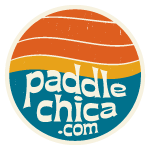Just Breathe: Regulating Your Breathing While Paddling
Whether you are a “mouth breather,” a “heavy breather,” or a “silent breather,” the truth of the matter is: EVERYONE HAS TO BREATHE! But the question often is, “When do I breathe while I’m paddling?”
Newer paddlers are often so focused on all the other complicated components of paddling that they completely neglect the importance of breathing. Yes, timing is crucial on a dragon boat, but so is oxygen intake! Breathing is the body’s way of bringing oxygen to the cells. You aren’t much use to anyone on the boat if you have passed out due to oxygen deprivation.

Photo: Ed Nguyen
Breathing, as obvious as it may seem, may not come naturally to you at first. In fact, I frequently remind my team to breathe throughout practices and even when I steer for them during races. It is amazing how many of us hold our breath while concentrating, so periodic reminders to breathe are helpful. Most paddlers don’t even realize they are holding their breath until their attention is called to it.
For some reason there is an inclination to inhale and hold while trying to exert energy. It is quite common in many sports and can unfortunately hurt your paddling, not to mention your body. As you deprive your muscles of oxygen, you become weaker, which is exactly what you do not need while paddling.
Breathing is the body’s way of bringing oxygen to the cells.
One way to control your breathing while paddling and to avoid huffing and puffing erratically is to concentrate on exhaling while exerting force on the blade. So, one would think that you should ideally be relaxed and graceful while inhaling on your recovery phase of the stroke. Then at the catch phase of the stroke, (where you find the hardest water and have to exert the most force on the paddle), you would be exhaling – some people even exhale with a small grunt. “Inhale on the less strenuous phase of the exercise, and exhale on the more demanding phase of the exercise,” according to personal trainer Mike Donavanik, C.S.C.S. But, unless your team has a ridiculously slow stroke rate, this is actually not possible to do without hyperventilating. Think about a stroke rate of 75+ strokes per minute. Taking that many breaths per minute wouldn’t exactly be productive.

Photo: Ed Nguyen
Instead, for a race, I recommend inhaling and exhaling calmly and deliberately as your boat approaches the start line. Then, focus on exhaling powerfully on the first stroke of the start. Your body should take over your breathing from there, as long as you remind yourself periodically to breathe. Again, you want to make sure you are not holding your breath; beyond that, your body knows what it needs.
Depending on whether you are in a steady-state piece, an all-out sprint, a start, a finish or something else entirely, your breathing needs will differ. However, you need to ensure that you are breathing! Tweet it!
How you breathe is actually more important than when you breathe. While paddling, keep your head up to keep the air flow clear. As soon as you drop your head, you are limiting your air flow to your lungs. Also, make sure to hinge and rotate the core at the hip. Bending above the waist can crunch your stomach and compress your lungs, which impinges your diaphragm, therefore negatively affecting your breathing.
Here are some comments and suggestions from a few paddling experts:
If I tune into my breathing it gets laboured. I make sure I actively exhale on certain strokes of the start and that’s it. I let nature take its course and focus on my voluntary muscle movements.
– Kamini Jain
IDBF Canadian Premier Mixed Team Coach
I tend to inhale on one stroke and then exhale a little on each of the next 3 strokes. In-out-out-out, repeat…
– Dan Harris
IDBF USA Premier Team Paddler
I only focus on my breathing during the starts. As a way to prep my body and then I let my body take over. When I think about breathing it makes it really hard to paddle. Also it can be hard to sit around people who audibly breathe every stroke during a race. I find that I start to breathe with them.
– Bren Trask
IDBF USA Premier Team Paddler
Seems like most everyone agrees… exhale on the power phase, inhale on the recovery. A couple of things: if I’m starting to feel a bit fatigued (e.g. long distance races), I exhale extra vigorously and then inhale equally vigorously. It clears out most/all of the CO2 and forces me to intake extra oxygen for continued maximal exertion. One other thing, I breathe through my mouth when paddling. Everything I ever learned in yoga, relaxation, meditation, etc. taught me to inhale through my nose, exhale through my mouth. I dare say that those teachers never raced an outrigger in all out sprints.
– Jerry Guy
outrigger paddler
Breathing, like many other aspects of paddling, will eventually become second nature to you and you won’t need to put as much focus on it. But until then, I highly suggest focusing on relaxing while paddling. During your training, check in with your breathing periodically, giving yourself reminders to breathe along the way.
Special thanks to Paolo Ameglio, Michael Boyd, Irwin Casiano, Dave Faulkner, Michael Finney, LiLin Gabb, Wendy Korotkin, Cynthia Mark, Bob Mina, Jennifer Peters, Scott Roche, Bryan Schang, Beverly Sorrells, Natalie Thomas, Ken Wong, Thomas Yoo, Kevin Young, and Richard Yudin for their contributions to this article.





